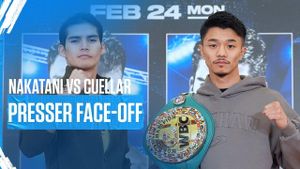On August 28, 2009, the brutal murder of former Supreme Electoral Tribunal minister José Guilherme Villela, his wife Maria Carvalho Villela, and their maid Francisca Nascimento da Silva shocked Brazil's capital. Found stabbed over 70 times in their upscale apartment located at Asa Sul, the case remains one of the most mysterious and controversial homicides in recent Brazilian history.
The documentary series "Crime da Asa 113", launched on Globoplay, delves deep to revisit the harrowing details surrounding this triple homicide, exploring its overlooked aspects through fresh testimonies and exclusive footage. Featuring four episodes, the series emerges as more than just a recounting of the crime; it serves as an investigation of the investigation itself.
What initially appeared to be a simple case of robbery gone wrong quickly spiraled when authorities turned their attention not to the suspected assailants but to those who had the motive—specifically, the couple’s daughter, Adriana Villela. Absence of forced entry and missing valuables fueled speculation about murder for hire, with investigators targeting Adriana, who had supposedly been financially dependent on her parents.
According to Reynaldo Turollo Jr., the series’ reporter and scriptwriter, “The person will feel as if they are part of the jury. They will see arguments from both sides and hopefully form their own opinion.” This encapsulates the series' goal—to present viewers with both sides of the case, enabling them to draw their conclusions.
The backdrop includes letters written by Maria to Adriana, which hinted at strife between them. These letters became pivotal evidence for police, with phrases implying financial stress and family discord becoming focal points indicating motive. Despite Adriana's claims of innocence, the prosecution asserted her responsibility for orchestrated the murders.
Complications arose within the investigation almost immediately. One of the earliest police officials, Martha Vargas, faced criminal charges herself due to claims of evidence tampering, including the dubious inclusion of keys to the apartment allegedly planted among the belongings of one suspect. Although three men were initially charged, including former porter Leonardo Campos Alves and his nephew Paulo Cardoso Santana, their eventual confessions brought even more uncertainties to light.
After over one year of enduring legal battles, the focus shifted from Adriana back to two convicted individuals. Leonardo confessed to being part of the robbery but later retracted his statement, instead accusing Adriana of being the mastermind. Each new confession seemed to contradict the previous one, raising doubts about the reliability of the testimonies.
“We conducted our investigation, exposing discoveries as we went along,” said Luiz Avila, the series director, emphasizing the documentary’s approach to tell the story from the fresh perspective of engaged journalism, as opposed to traditional crime documentaries.
Every episode takes the viewers through the twists and turns of the investigation, riddled with inaccuracies, unfounded allegations, and questionable partnerships. At the heart of this complex web is Adriana, contending with the stigma of guilt thrust upon her. Adriana argues, “I have always worked with social projects. When I could not secure public funding, I found alternative sponsorship.”
The series highlights the potential innocence of Adriana through the stories of those wrongly accused and the systematic failures within law enforcement. It digs through over 16,000 documents related to the case, showcasing inconsistencies and notable omissions throughout the proceedings—issues which have underscored the case’s high-profile nature.
The Innocence Project, known for advocating against wrongful convictions, recently intervened, prompting interviews with Paulo Cardoso Santana. He reportedly denied any involvement from Adriana or Francisco Mairlon Aguiar, another alleged accomplice. Their testimonies lend credence to her claims of innocence, yet the case’s convoluted nature means Adriana remains trapped within the shadow of her presumed guilt.
If the Superior Court of Justice hears Adriana’s appeal—set for March 11, 2024—her hope for justice lingers. A successful appeal may lead to retrial and reexamine the evidence presented during her initial trial, marked by contested narrations of events.
The crime itself, the resulting societal uproar, and the judicial failures stemming from it remain poignant reminders of how complex and troubling the pursuit of justice can be. Every angle explored, every testimony revisited, adds another layer to the already complicated narrative.
Adriana and her story encapsulate the human aspect often overshadowed by sensational headlines. While the gruesome reality of the crime persists, the documentary opens doors to dialogue surrounding judicial integrity and societal perceptions of guilt—questions just as compelling as the case itself. Now, as audiences watch the retelling of this tragic event, the urgent question remains: Who truly was behind the tragedy of Asa Sul?



